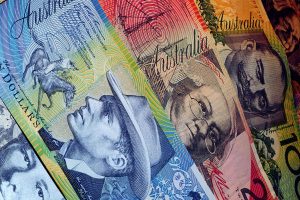 Friday’s trade (in GMT terms) saw AUD/USD within the range of 0.7538-0.7659. The pair closed at 0.7538, plummeting 1.39% compared to Thursdays close. It has been the 12th drop in the past 23 trading days, a third consecutive one and also the steepest one since June 27th. The daily low has been a level unseen since September 2nd, when a low of 0.7536 was registered. In weekly terms, AUD/USD lost 0.44% of its value during the current week. It has been the 16th drop in the past 36 weeks. The major pair has pared its advance to 0.27% so far during the current month, following a 1.04% slump in August.
Friday’s trade (in GMT terms) saw AUD/USD within the range of 0.7538-0.7659. The pair closed at 0.7538, plummeting 1.39% compared to Thursdays close. It has been the 12th drop in the past 23 trading days, a third consecutive one and also the steepest one since June 27th. The daily low has been a level unseen since September 2nd, when a low of 0.7536 was registered. In weekly terms, AUD/USD lost 0.44% of its value during the current week. It has been the 16th drop in the past 36 weeks. The major pair has pared its advance to 0.27% so far during the current month, following a 1.04% slump in August.
No relevant macroeconomic reports and other events, which may influence AUD/USD trading, are scheduled on Monday (September 12th).
US Dollar picks up after Rosengrens statement, North Koreas nuclear test
The greenback and the Japanese yen were broadly supported on Friday, following news that North Korea has conducted a fifth test of a nuclear warhead a day ago, in order to protect itself against “threats and sanctions” from hostile elements, the countrys official news agency said. The test was claimed to have invoked an earthquake with a magnitude of 5.3 near the states secretive nuclear test site. The last time North Korea tested its nuclear capabilities was in January.
Meanwhile, in a speech on Friday the Fed President for Boston and a member of the Federal Open Market Committee, Eric Rosengren, said low interest rate environment may increase the possibility of overheating the US economy. According to Rosengren, in order to maintain full employment, it is appropriate to gradually tighten monetary policy. His remarks somewhat reinvigorated investor expectations of a rate hike.
According to CME’s FedWatch Tool, as of September 9th, market players saw a 24.0% chance of a rate hike occurring at the Federal Reserve’s policy meeting in September, up from 18.0% in the prior business day, and a 28.7% chance of a hike in November, up from 21.3% in the preceding day. As far as the December meeting is concerned, the probability of such a move was seen at 59.2% on September 9th, up from 51.4% in the preceding business day.
The US Dollar Index, a gauge reflecting the relative strength of the greenback against a basket of 6 other major currencies, closed at a level of 95.33 on Friday, edging up 0.31% from a day ago. During the trading day the index went up as high as 95.58, or a level unseen since September 6th. The gauge has pared its drop to 0.71% so far in September, following a 0.54% advance in August.
Correlation with other Majors
Taking into account the business week ended on September 9th and the daily closing levels of the major currency pairs, we come to the following conclusions in regard to the strength of relationship:
AUD/USD to NZD/USD (0.9044, or very strong)
AUD/USD to GBP/USD (0.7900, or strong)
AUD/USD to EUR/USD (0.5070, or strong)
AUD/USD to USD/JPY (-0.7372, or strong)
AUD/USD to USD/CHF (-0.8129, or very strong)
AUD/USD to USD/CAD (-0.9123, or very strong)
1. During the examined period AUD/USD moved almost equally in one and the same direction with NZD/USD.
2. AUD/USD moved strongly in one and the same direction with EUR/USD and GBP/USD during the week, while moving strongly in the opposite direction compared to USD/JPY.
3. AUD/USD moved almost equally in the opposite direction compared to USD/CHF and USD/CAD during the period in question. This relationship has been the most pronounced between AUD/USD and USD/CAD.
Bond Yield Spread
The yield on Australias 2-year government bonds went as high as 1.605% on September 9th, or the highest level since July 27th (1.634%), after which it closed at 1.584% to add 9 basis points (0.09 percentage point) compared to September 8th.
Meanwhile, the yield on US 2-year government bonds climbed as high as 0.802% on September 9th, after which it fell to 0.782% at the close to add 0.008 percentage point compared to September 8th.
The spread between 2-year Australian and 2-year US bond yields, which reflects the flow of funds in a short term, widened to 0.802% on September 9th from 0.720% on September 8th.
Daily, Weekly and Monthly Pivot Levels
By employing the Camarilla calculation method, the Monday levels of importance for AUD/USD are presented as follows:
R1 – 0.7549
R2 – 0.7560
R3 (Range Resistance – Sell) – 0.7571
R4 (Long Breakout) – 0.7605
R5 (Breakout Target 1) – 0.7643
R6 (Breakout Target 2) – 0.7659
S1 – 0.7527
S2 – 0.7516
S3 (Range Support – Buy) – 0.7505
S4 (Short Breakout) – 0.7471
S5 (Breakout Target 1) – 0.7433
S6 (Breakout Target 2) – 0.7417
By using the traditional method of calculation, the weekly levels of importance for AUD/USD are presented as follows:
Central Pivot Point – 0.7603
R1 – 0.7669
R2 – 0.7799
R3 – 0.7865
R4 – 0.7930
S1 – 0.7473
S2 – 0.7407
S3 – 0.7277
S4 – 0.7146
In monthly terms, for AUD/USD we have the following pivots:
Central Pivot Point – 0.7589
R1 – 0.7689
R2 – 0.7860
R3 – 0.7960
R4 – 0.8060
S1 – 0.7418
S2 – 0.7318
S3 – 0.7147
S4 – 0.6976





